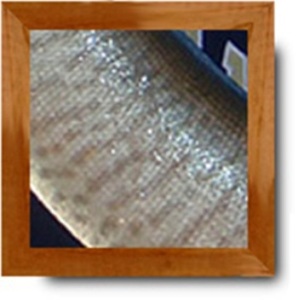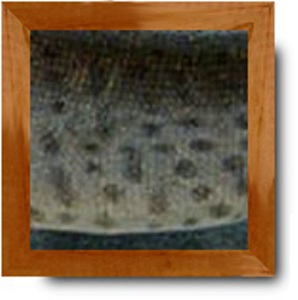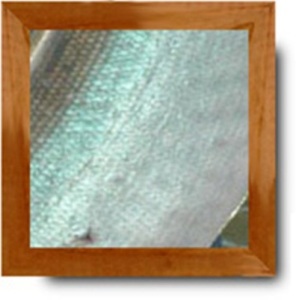
Home Sweet Home
Muskellunges are mostly found in the
upper Midwest of the U.S., although Muskellunges have been caught as far west as Maine. They have also been caught as
far south as Tennessee. Muskellunges, however, are most commonly
reeled-in in the great state of Wisconsin. The reason for the
diversity of habitats is because they can swim east through flowages
of the Great Lakes, and down the Ohio River. In fact because of their great range, Muskellunges are sometimes divided in
3
sub-species. The reason for these 3 sub-species are because of their
origin and slightly differing side-bar designs. The sub-species are Esox masquinongy masquinongy, Esox masquinongy ohioensis, and Esox masquinongy immaculates.
Most commonly, species are defined by if they can mate, what they
look like, or if share a recent ancestor. However, location of origin is
rarely used in respect to a 'biological species', so the divisions
of Esox masquinongy are
rarely acknowledged. Muskellunges thrive in clear lakes or rivers
that also have extensive weed beds. The weed beds are for
reproduction,
because of their great range, Muskellunges are sometimes divided in
3
sub-species. The reason for these 3 sub-species are because of their
origin and slightly differing side-bar designs. The sub-species are Esox masquinongy masquinongy, Esox masquinongy ohioensis, and Esox masquinongy immaculates.
Most commonly, species are defined by if they can mate, what they
look like, or if share a recent ancestor. However, location of origin is
rarely used in respect to a 'biological species', so the divisions
of Esox masquinongy are
rarely acknowledged. Muskellunges thrive in clear lakes or rivers
that also have extensive weed beds. The weed beds are for
reproduction,
 because
Muskellunges commonly spawn in shallow weed beds. Muskellunges may
also be increasing in Tennessee and Ohio because they
can live in safety there. Both of these states have
protected portions of their Muskellunge populations. However, they
are not the only states that limit legal Muskellunge fishing. Wisconsin has several restrictions, like the minimum legal length is
34 inches and the limit is 1 Muskellunge per day. Recently (2009),
some anglers have been petitioning to increase the legal limit to
50 inches in Wisconsin! Muskellunges are an important organism in their ecosystem.
They help to control other organisms' populations, and do a good job
of policing their own population sizes because they are so
aggressive. Muskellunges are also relatively sedentary animals. They
are able to conceal themselves in the same weed bed, or under the
same log day after day until they
because
Muskellunges commonly spawn in shallow weed beds. Muskellunges may
also be increasing in Tennessee and Ohio because they
can live in safety there. Both of these states have
protected portions of their Muskellunge populations. However, they
are not the only states that limit legal Muskellunge fishing. Wisconsin has several restrictions, like the minimum legal length is
34 inches and the limit is 1 Muskellunge per day. Recently (2009),
some anglers have been petitioning to increase the legal limit to
50 inches in Wisconsin! Muskellunges are an important organism in their ecosystem.
They help to control other organisms' populations, and do a good job
of policing their own population sizes because they are so
aggressive. Muskellunges are also relatively sedentary animals. They
are able to conceal themselves in the same weed bed, or under the
same log day after day until they are either moved by hunger or
intimidated by a bigger Muskellunge. For current Muskellunge
demographics in Wisconsin, please visit
http://dnr.wi.gov/fish/musky/.
What kind of
food lives in these habitats?
are either moved by hunger or
intimidated by a bigger Muskellunge. For current Muskellunge
demographics in Wisconsin, please visit
http://dnr.wi.gov/fish/musky/.
What kind of
food lives in these habitats?